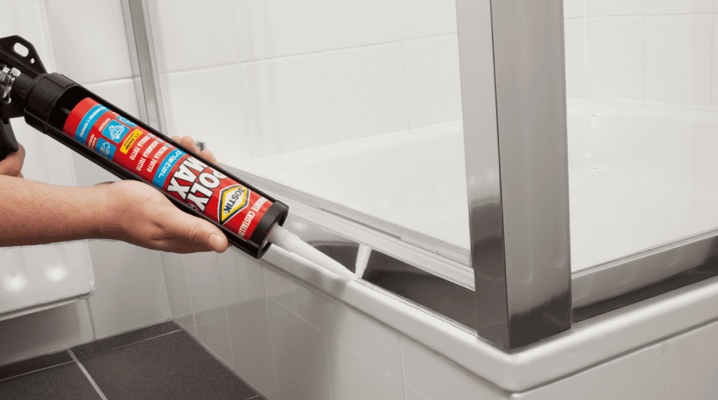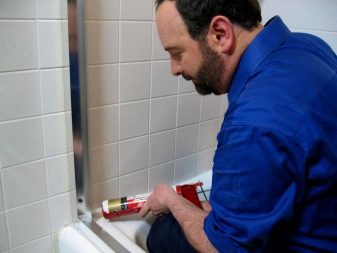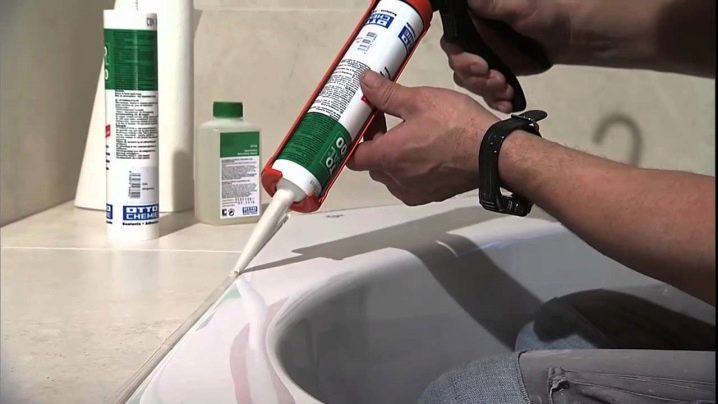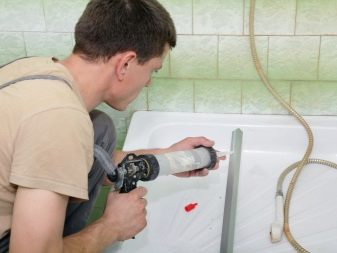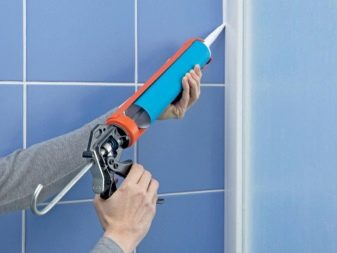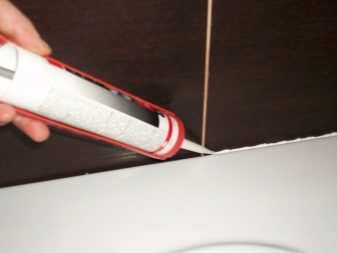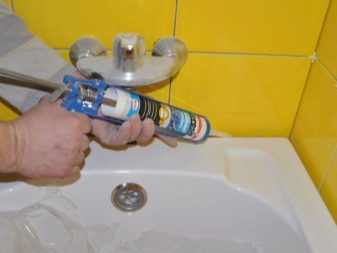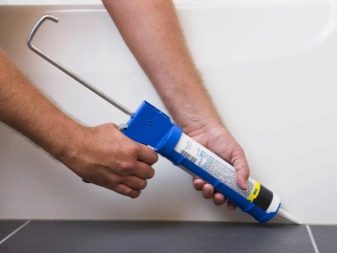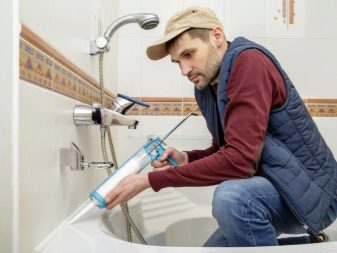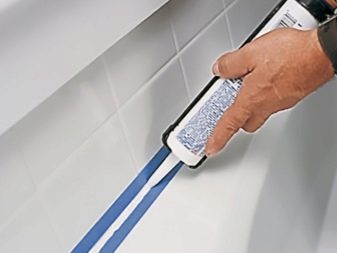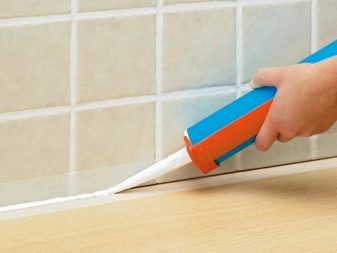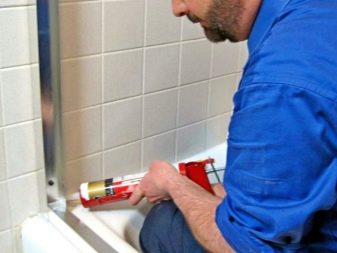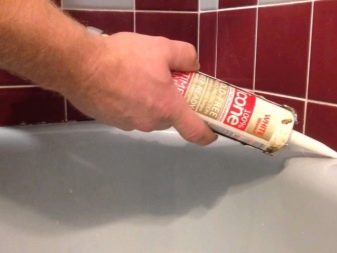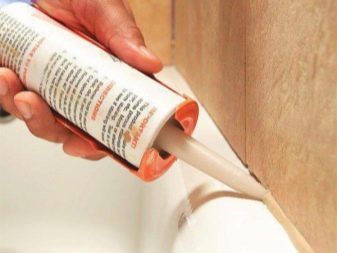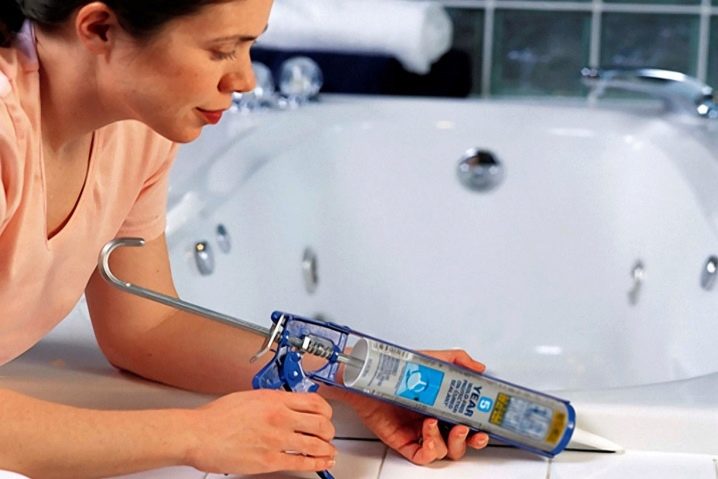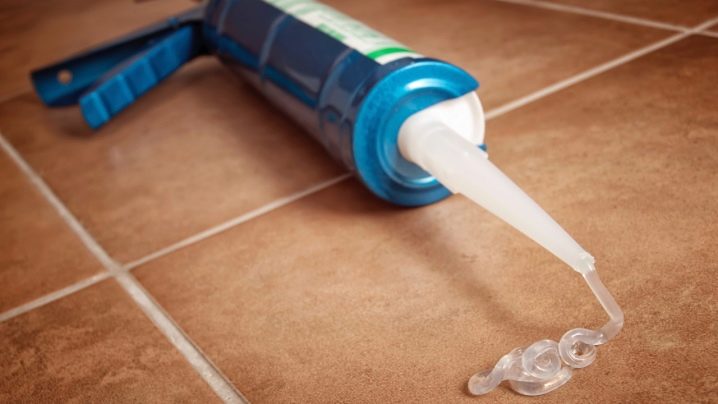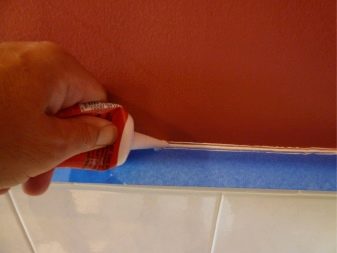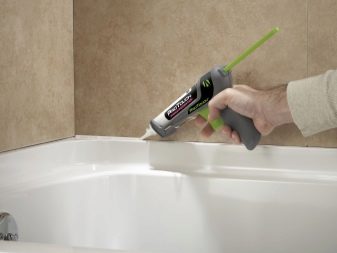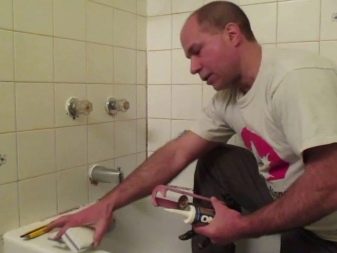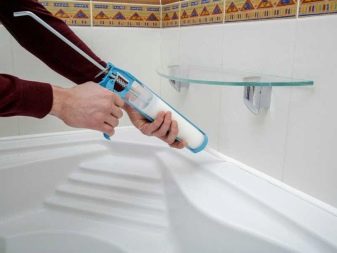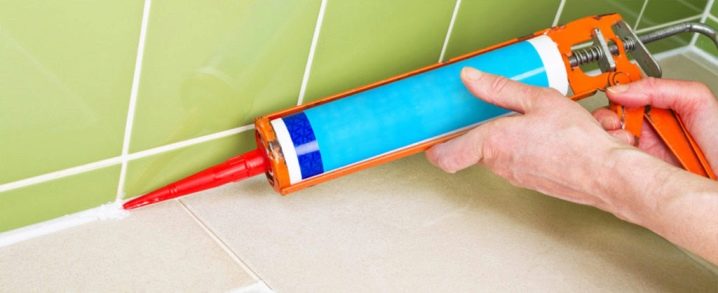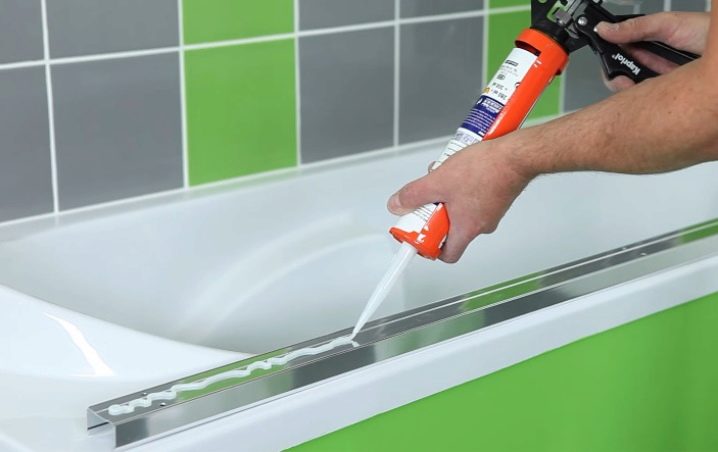Subtleties of the shower enclosure seal
Nowadays, shower enclosures are a very popular bathroom solution. Someone wants to save space in the bathroom, someone just finds the presence of a shower cabin convenient, and someone wants to save water in the context of higher prices for hot water. In any case, shower boxes and cabins are quite popular, although they are not without certain disadvantages. It is a question of sealing the booth.
Special features
After installing the cabin in a small bathroom there is still space for some kind of furniture, a washing machine, and so on. And the sealing of the shower stall is the most important element of protecting the room from moisture and its surplus and, as a result, dampness in the room. The severity of the problem in this case is due to the fact that the booth is a composite construction. Namely, through the gaps between its parts, moisture with steam gets out and increases humidity.
Moreover, it causes the formation and extreme rapid spread of fungi, mold, and other harmful microorganisms in the bathroom, and then in the apartment. Their spores, which are released into the air, cause allergies, diseases of the respiratory tract, lungs, and so on. In addition, dampness can attract various creatures: cockroaches, rats, insects, woodlice, and the like, which are carriers of dangerous infectious diseases. That is why it is strongly recommended that after installation it is imperative to seal and waterproof the shower enclosure.
If we talk about the most frequent places of leakage, then most often it is the joining seams. This is the weakest point in any shower. Another reason could be the cab design itself. In a large number of models, there are small thresholds in height, through which elementary water is shed. Another reason for spilling water can be the poor quality of the drain mechanism or the combination of its elements. In this case, the water simply accumulates under the shower stall. As a rule, it is enough either to tighten the fasteners, or to replace the system itself.Another fairly common cause of a shower stall is a crack in the shower stall.
Types of sealants
The process of sealing is carried out by the use of special tools called sealants. They are produced as a paste of high thickness, which is applied to the seams at the joints of various surfaces. The specified substance consists of polymers having an adhesive base. When they dry, they simply fill the space and glue the surfaces together.
Today, you can use two types of sealant:
- silicone based;
- acrylic.
The latter is almost impossible to use in bathrooms and showers due to the fact that in these places there is high humidity. And acrylic under its action just starts to decompose, in the process of drying it just cracks and slowly collapses. For this reason, substances of various kinds that are resistant to water are added to acrylic pastes. But even so, acrylic does not differ in such durability as silicone.
Silicone is considered the best solution.which is currently on the market for two reasons: He calmly reacts to the impact of water, and also reliably blocks all holes and holes. Therefore, most craftsmen believe that it is better to use silicone sealant in the case described. But he also needs to be able to choose. The main purpose of this composition is to create a reliable barrier to prevent the ingress of moisture. Considering that the consequences of its penetration can later turn into serious expenses, it is better not to save on the sealant from the very beginning. The fact is that some poor-quality compounds of this type can quickly lose their waterproofing properties, and after some time you will have to do it again.
To determine whether a sealant is of high quality prior to its purchase and subsequent use, it is necessary to become familiar with the composition indicated on the label. The best for the shower will be the option that contains at least 45 percent of a hydrophobic type filler, 45 percent of silicone-based rubber, a plasticizer, as well as various kinds of additives: thixotropic substances, catalyze and fungicides.It is best to choose sealants from well-known manufacturers, whose products have already shown their high quality when creating seams and sealing such areas.
The most popular today are special sealants of such brands as Somafix, Stern or Antia. Also, a fairly universal solution would be to use transparent aquarium silicone, which can be used not only for joints with walls or tiles, but also for sealing sanitary fittings.
How to seal?
In order to carry out the process of sealing with your own hands correctly, you should use special equipment, which is most often supplied with sealant. This is a so-called pistol, into which a capsule with a sealant is inserted, and the force is transmitted from the trigger through a special design to the piston. This allows the application of a sealed mass in an even layer without breaks along the entire butt length. But before you do this, you need to degrease the surface, thoroughly and very thoroughly clean it from particles of dirt and dust, to ensure a reliable connection of silicone with the edges of the degreased surface.It would not be superfluous to apply an antifungal compound in order to exclude any kind of fungus or mold formation at all.
The following factors affect the rate of hardening:
- the thickness of the applied sealant;
- temperature;
- moisture level in the room where the work is carried out.
Considering the last two factors, it is necessary not to use the bathroom for some time in order not to raise the humidity and temperature in it before working. When it was possible to seal the necessary area, experts for some time did not recommend using a shower. As mentioned, silicone-based sealant is an ideal solution for protecting joints when installing a shower stall. It is easier to manage with it than with acrylic sealant, and its properties will be better. And the affordable price indicates that it is better to choose this type of sealant.
If we go directly to the sealing process, then the shower enclosures should be siliconized either during assembly (each connection), or after the installation is completed (all joints that have formed). It is necessary to carefully apply sealant to the places that have already been sealed with cords or rubberized gaskets.It is necessary to handle joints in such a way that the places where parts are fastened to the structure with screws or with the help of bolts are on the outer side of the sealant strip.
Seal should be according to the plan-instructions from the manufacturerin which the entire process is clearly and step by step described. And at each stage, all joints and joints must be applied silicone.
Seam processing should be carried out as carefully as possible and very carefully. The substance should not fall on the inner parts of the shower box, bath or tray. A small amount of sealant will suffice for any corner. If you are unsure of being able to gently silicone, then some places, and especially those that are near the seal gasket line, can be pasted over with masking tape. This will protect them from accidental ingress of sealant.
When all work is completed, the tape is easily removed. If suddenly you accidentally soiled some unprotected place, the fresh composition can be removed with a piece of cloth. When the sealant dries, it will be almost impossible to remove without damaging the surface.
When all the joints inside the shower stall are treated with silicone or other sealant, and the design is fully assembled and fixed with all fixtures, it is imperative to conduct a general inspection of the shower stall from the outside. It should be very carefully inspect it for the presence of excess sealant from the outside. If such surpluses are found, then they should be wiped carefully with a cloth or a cloth.
Next, you need to give the sealant time to dry. As a rule, the time of its drying is indicated on the tube. When it is completely dry, then you need to check the structure for tightness. To do this, simply cut off the drain and collect water in the pan or on the floor to a certain level, and then lower it. During the water intake, it will be possible to understand or the shower is flowing in the most important places. If such a leak is detected, then in order to eliminate it, it will be necessary to replace the entire applied sealant with a new one. It will be meaningless to use sealant in places of leakage, since it will not be a single tenacious mass. Such a decision is temporary. But sooner or later this place will flow again.
Tips
It should be said that if the shower cabin does not have a pallet, then in order to be called airtight, it is necessary to use high-quality grouting for joints located between the tiles. The fact is that they absorb all the water. The tile has water-repellent properties, but the seams are not. For this reason, they are treated with a grout to withstand the effects of water, as well as the blows that it carries out in the fall. And the processing of this mixture will eliminate the appearance of the fungus.
The whole complex of measures described above must be implemented precisely in the complex. This is the best way to achieve the desired result. If we allow temporary breaks in this process, then the success of the result will be significantly reduced. Therefore, do not compromise the safety of your neighbors who live on the floor below.
Do not save on sealants and buy substances of dubious quality. As a rule, the service life of such sealants is significantly lower, and their protective properties are weaker. If a low-quality sealant has been applied before, then it is best to replace it with a new one. Do not try to save a small amount,since during the flow the number of problems will only increase, and you will need to pay significantly more.
To make a shower enclosure sealing is quite simple. But for this you need to know the procedure well. Moreover, it is necessary to clearly understand the features of each stage. It is necessary to strictly adhere to technology, to know all the features of your shower cabin.
On the intricacies of sealing the shower, see the following video.
